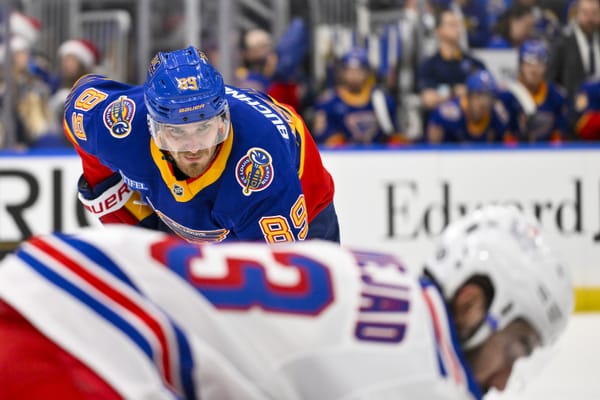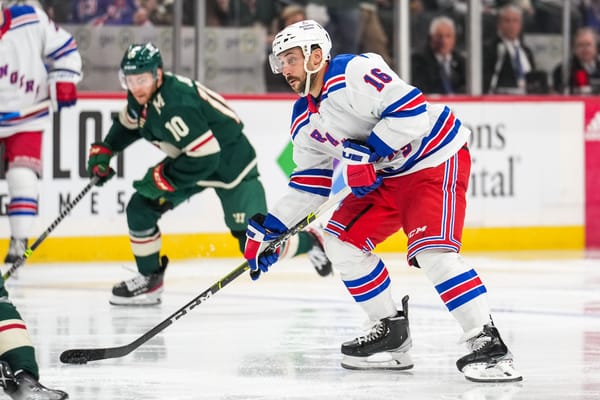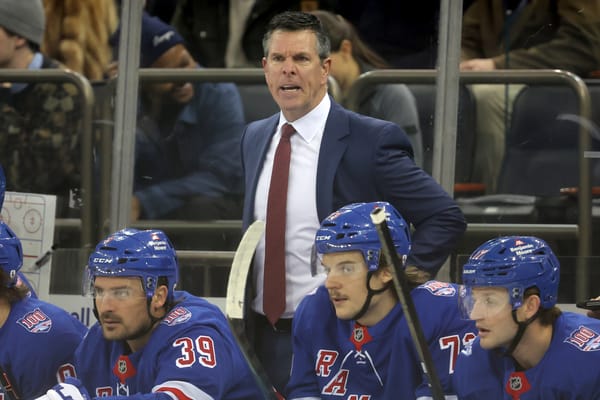Kaapo Kakko, Diabetes, and Celiac Disease
Kakko’s medical conditions require discipline, but they should not hold him back in any way
There are a lot of reasons to be excited about New York Rangers prospect Kaapo Kakko. After all, he has the potential to be the most exciting homegrown Ranger since Henrik Lundqvist and the most exciting homegrown Rangers forward since Rod Gilbert.
When you’re a prospect as coveted as Kakko was before the 2019 Draft, you operate under the heat of a large spotlight long before you step on stage, shake a lot of hands, and pull on the hat and jersey of the NHL team that was lucky enough to draft you. When you get drafted by the Rangers, that already massive spotlight grows even brighter.
Even after the Artemi Panarin and Jacob Trouba signings, Kakko is the name that has most Rangers fans buzzing about the future. Just like Panarin and Trouba, he has the potential to direct the fate of this franchise for years to come. As a result, fans want to know all about the young Finn, including what life is like for him as someone who has both Type 1 diabetes and celiac disease.
The winger was diagnosed with both conditions about five years ago, which means that they are nothing new to Kakko. And, given how he has played with and against men in Liiga and at the 2019 World Championships, it’s safe to assume that he is on top of managing life as a diabetic who needs to have a gluten-free diet. Leading up to the draft, he was quick to dismiss the impact that diabetes and celiac have on his life and his game.
“It was five years ago, and I was given no restrictions then by doctors, nor do I have any now," Kakko shared an interview before the 2019 Draft. "Nothing. It’s not affecting my game in any way, and I don’t even think about it.”
Celiac is an immune disease that is difficult to diagnose, but is relatively easy to manage after diagnosis. To put it simply, if you have celiac, you need to have a gluten-free diet. Gluten is a protein found in wheat and other grains like barley and rye. Many of us get a lot of our carbohydrates from foods that have wheat in them, like bread, pasta, and cereal. Fortunately, wheat doesn’t have a monopoly on carbs.
On a personal note, my father had celiac disease and suffered from chronic abdominal pain for years before he was finally diagnosed. Once he removed gluten from his diet, he turned to rice and potatoes to replace the gluten in his diet. However, he also could have found his carbs in corn, soy, sorghum, quinoa, and other foods.
Even for an elite athlete like Kakko, living with a gluten-free diet shouldn’t be problematic. Max Domi of the Montreal Canadians is also a Type 1 diabetic with celiac disease. It’s also worth noting that Domi and Kakko aren’t the only big names in hockey living with diabetes. Hockey Hall of Famer Bobby Clarke, Minnesota Wild prospect Luke Kunin, and pro women’s hockey player Anissa Gamble are all Type 1 diabetics.
Managing Type 1 diabetes requires you to monitor your blood glucose levels, take insulin when necessary, and to pay attention to what you eat and how it affects your glucose levels. In other words, it requires discipline.
All professional athletes have to demonstrate some level of discipline with their diet, which means that Kakko won’t be the only Ranger watching what he eats. He’ll just be the only Ranger routinely checking his blood glucose levels throughout the day, especially on game days.
This is not to say that Type 1 diabetes and celiac disease are not serious conditions; they are. However, they should not hold Kakko back from having a long and successful NHL career. If you’re looking for evidence to support that claim, look no further than Domi’s 72-point 2018-19 campaign or Bobby Clarke’s career.
Interestingly enough, Domi has had a personal chef since he first came into the league with the Arizona Coyotes. If Kakko doesn’t follow that path, he can always consult with Erika Whitman, the sports dietitian for the Rangers, New York Knicks, and New York Liberty, for guidance about optimizing his nutrition within the parameters of his dietary restrictions. It goes without saying that the Rangers will provide everything that Kakko needs to refuel and train in a healthy manner.
“It’s all organic, all whole-food stuff I put in my body and I’ve been noticing a big difference in being able to recover,” Domi shared in an interview last October. “Last year, I played all 82 games and I think the diet was a big part of that. The second half of the season is when I felt the best and I think a big part of that was nutrition.”
In some ways, you could look at how an athlete manages their diabetes as a skill or even an asset. In addition to requiring a tremendous amount of discipline, managing diabetes as a professional athlete encourages you to stay organized and to become acutely aware of what is going into your body and how it makes you feel. It wouldn’t be surprising to hear that Kakko and Domi know more about nutrition than many NHL veterans.
Down the road, Kakko could prove to be an important ambassador for people living with autoimmune diseases. Before that happens, Kakko has to prepare himself for the rigors of an 82-game regular season. As a diabetic, he needs to pay more attention to his body during offseason training than his teammates do, but that hasn’t held him back one bit over the last five years. So there’s no reason why it should hold him back now.




